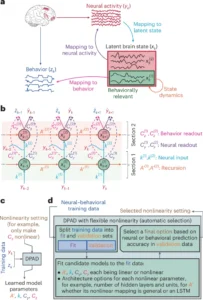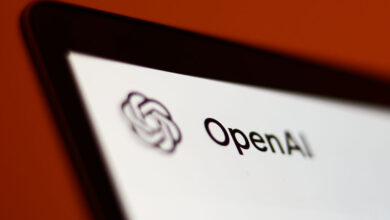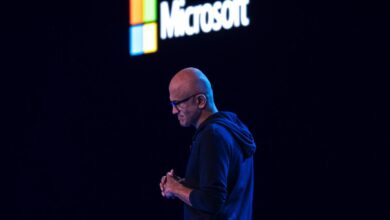DPAD Algorithm Enhances Brain-Computer Interfaces, Promising Advancements in Neurotechnology

The human brain, with its intricate network of billions of neurons, is constantly buzzing with electrical activity. This neural symphony encodes all our thoughts, actions and sensations. For neuroscientists and engineers working on brain-computer interfaces (BCIs), deciphering this complex neural code has been a huge challenge. The difficulty lies not only in reading brain signals, but also in isolating and interpreting specific patterns amid the cacophony of neural activity.
In a significant leap forward, researchers at the University of Southern California (USC) have developed a new artificial intelligence algorithm that promises to revolutionize the way we decode brain activity. The algorithm, called DPAD (Dissociative Prioritized Analysis of Dynamics), offers a new approach to separating and analyzing specific neural patterns from the complex mix of brain signals.
Maryam Shanechi, the Sawchuk Chair in Electrical and Computer Engineering and founding director of the USC Center for Neurotechnology, led the team that developed this groundbreaking technology. Their work, recently published in the magazine Nature Neurosciencerepresents a significant advance in the field of neural decoding and holds promise for improving the capabilities of brain-computer interfaces.
The complexity of brain activity
To understand the meaning of the DPAD algorithm, it is crucial to understand the complicated nature of brain activity. At any given moment, our brains are busy with multiple processes simultaneously. For example, as you read this article, your brain is not only processing the visual information from the text, but also checking your posture, regulating your breathing, and possibly thinking about your plans for the day.
Each of these activities generates its own pattern of neural firing, creating a complex tapestry of brain activity. These patterns overlap and interact, making it extremely difficult to isolate the neural signals associated with a specific behavior or thought process. In Shanechi’s words: “All these different behaviors, like arm movements, speech, and different internal states like hunger, are coded in your brain at the same time. This simultaneous coding leads to very complex and confused patterns in the brain’s electrical activity.”
This complexity poses significant challenges for brain-computer interfaces. BCIs are intended to translate brain signals into commands for external devices, potentially allowing paralyzed individuals to control prosthetic limbs or communications devices just by thinking. However, the ability to accurately interpret these commands depends on isolating the relevant neural signals from the background noise of ongoing brain activity.
Traditional decoding methods have struggled with this task, often failing to distinguish between intentional commands and unrelated brain activity. This limitation has hindered the development of more advanced and reliable BCIs, limiting their potential applications in clinical and assistive technologies.
DPAD: a novel approach to neural decoding
The DPAD algorithm represents a paradigm shift in the way we approach neural decoding. At its core, the algorithm uses a deep neural network with a unique training strategy. As Omid Sani, a research associate in Shanechi’s lab and former Ph.D. student, explains: “A key element in the AI algorithm is to first look for brain patterns associated with the behavior in question and learn these patterns on a priority basis while training a deep neural network.”
This prioritized learning approach allows DPAD to effectively isolate behavior-related patterns from the complex mix of neural activity. Once these primary patterns are identified, the algorithm learns to take the remaining patterns into account so that they do not distort or mask the signals of interest.
The flexibility of neural networks in the algorithm’s design allows it to describe a wide range of brain patterns, making it adaptable to different types of neural activity and potential applications.

Source: USC
Implications for brain-computer interfaces
The development of DPAD holds great promise for advancing brain-computer interfaces. By more accurately decoding movement intentions from brain activity, this technology could significantly improve the functionality and responsiveness of BCIs.
For individuals with paralysis, this could translate into more intuitive control over prosthetic limbs or communication devices. The improved decoding accuracy could enable finer motor control, potentially enabling more complex movements and interactions with the environment.
Furthermore, the algorithm’s ability to separate specific brain patterns from background neural activity could lead to BCIs that are more robust in the real world, where users are constantly processing multiple stimuli and engaging in various cognitive tasks.
Beyond Movement: Future Applications in Mental Health Care
Although the initial focus of DPAD was on decoding movement-related brain patterns, its potential applications extend far beyond motor control. Shanechi and her team are exploring the possibility of using this technology to decode mental states such as pain or mood.
This possibility could have profound implications for mental health treatment. By closely monitoring a patient’s symptom states, doctors can gain valuable insights into the progression of mental illness and the effectiveness of treatments. Shanechi envisions a future where this technology “could lead to brain-computer interfaces not only for movement disorders and paralysis, but also for mental health issues.”
The ability to objectively measure and track mental states could revolutionize the way we approach personalized mental health care, allowing therapies to be more precisely tailored to the needs of individual patients.
The broader impact on neuroscience and AI
The development of DPAD opens new avenues for understanding the brain itself. By providing a more nuanced way to analyze neural activity, this algorithm could help neuroscientists discover previously unrecognized brain patterns or refine our understanding of known neural processes.
In the broader context of AI and healthcare, DPAD is an example of the potential of machine learning to tackle complex biological problems. It shows how AI can be used not only to process existing data, but also to uncover new insights and approaches in scientific research.






